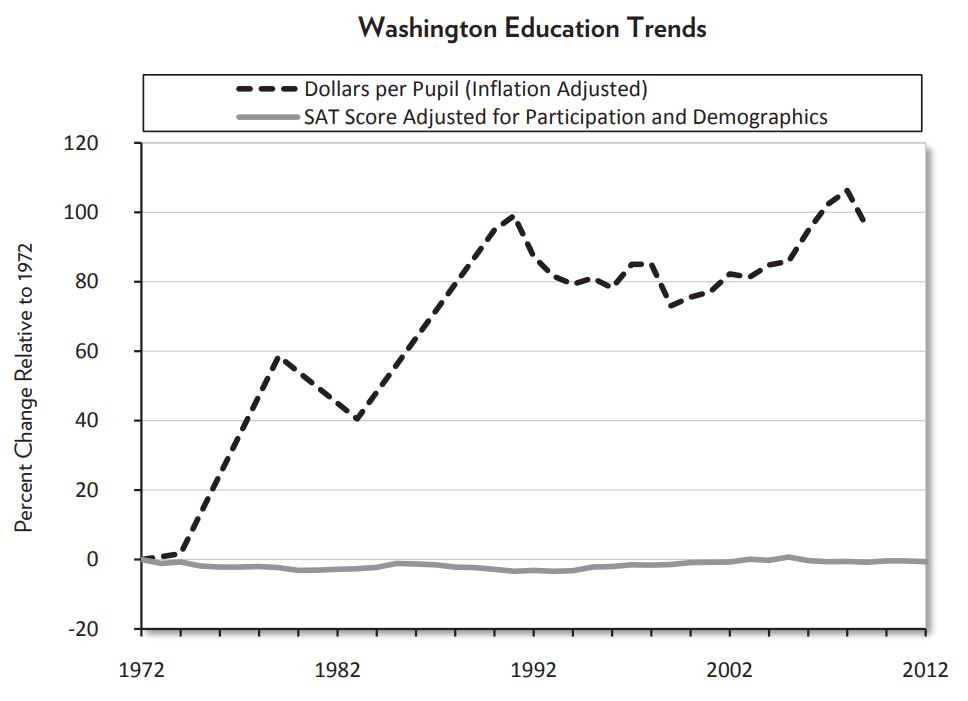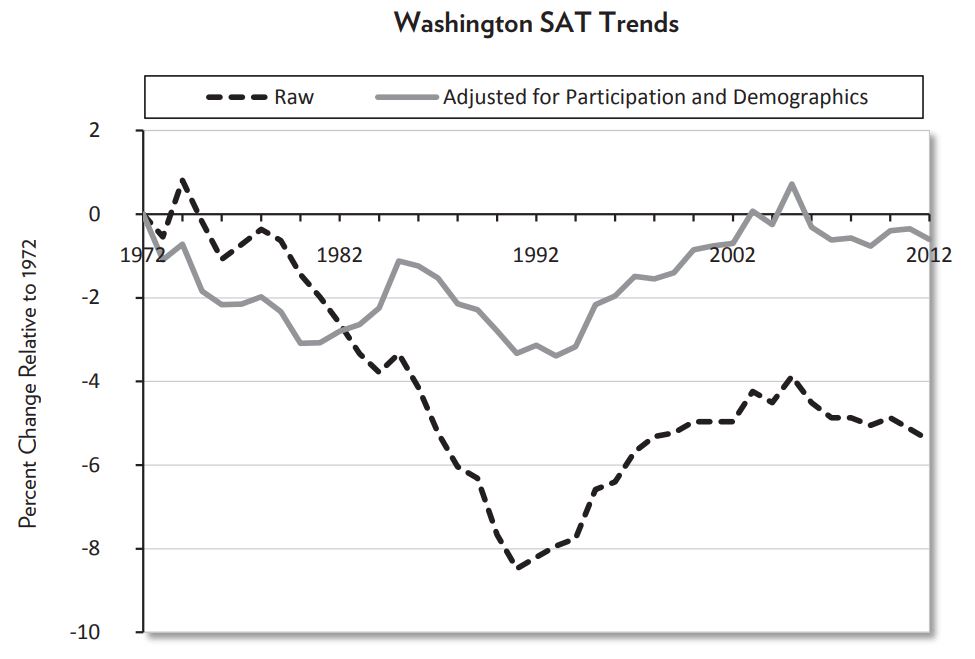Academic performance and preparation for college success are important goals for all K-12 education. The CATO Institute graphed academic performance data from the U.S. Dept. of Education over a 40 year period.[1] Using SAT and NAEP (National Assessment of Educational Progress) scores, the performance of 17-year-olds in reading, math, and science from 1970 to 2010 was plotted. Included in the graph is the total cost of education, adjusted for inflation, and the number of school employees.
The graph shows that test scores have flat-lined during those 40 years while the total cost of K-12 education has nearly tripled. In 1970, the cost of K-12 education for a single student was $57,602. In 2021, that cost rose to $164,426. The number of employees has almost doubled. We’ve been pouring more and more money into education with little impact on test scores and achievement.
In his conclusion, the author states, “This is remarkably unusual. In virtually every other field, productivity has risen over this period thanks to the adoption of countless technological advances – advances that, in many cases, would seem ideally suited to facilitating learning. And yet, surrounded by this torrent of progress, education has remained anchored to the river bed, watching the rest of the world rush past it.”
The findings of Washington State during the same years are just as discouraging. For two generations, from 1972 to 2010, per-pupil spending, adjusted for inflation, has nearly doubled, while state-averaged test scores have stagnated. In other words, this state’s educational productivity appears to have collapsed, as measured by SAT and NAEP test scores.


Sedro-Woolley schools have followed much the same pattern of increased spending and poor student achievement. In 1998, Sedro-Woolley School District collected $5.36 million through bonds and levies.[2] In 2021, the district collected $15.26 million in Enrichment, Capital Projects, and Bond levy money.[3] This is nearly 3x more than the amount of money collected in 1998. What have the taxpayers received in return? In 2018-2019, 56.3% of Sedro-Woolley students met the ELA (English Language Arts) standard, 45.4% met the math standard and 45.2% met the science standard. Only 65% of high school seniors graduated in 2020. One might have expected a better outcome with the increased tax burden.[4]
In this time of record inflation, it is time for our schools to tighten their belts.
